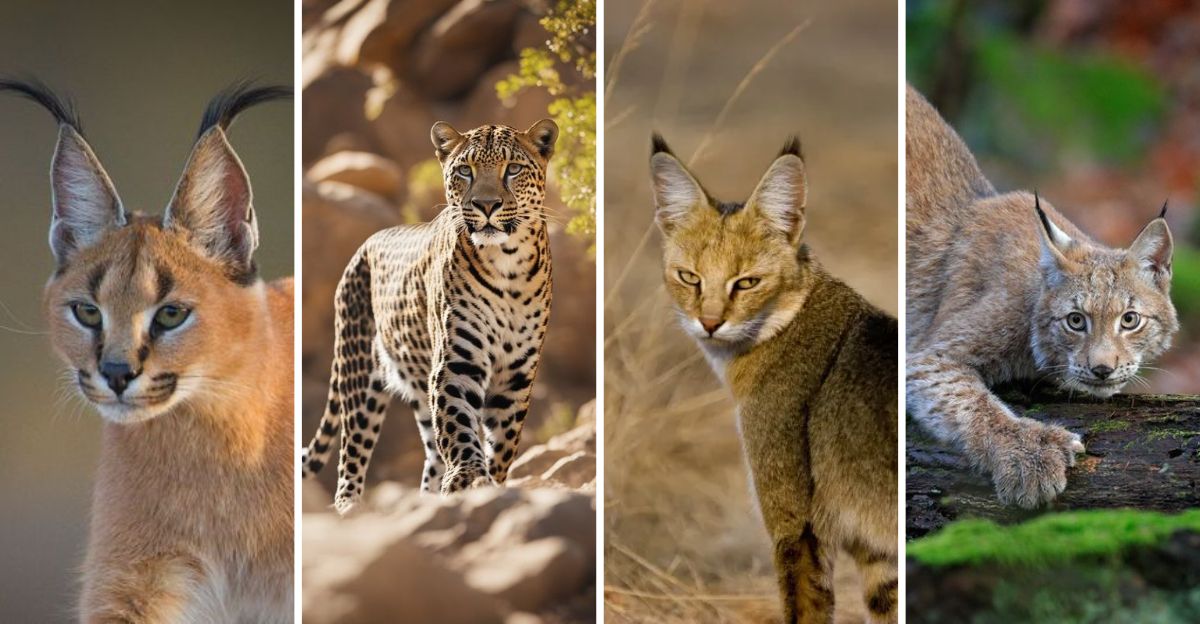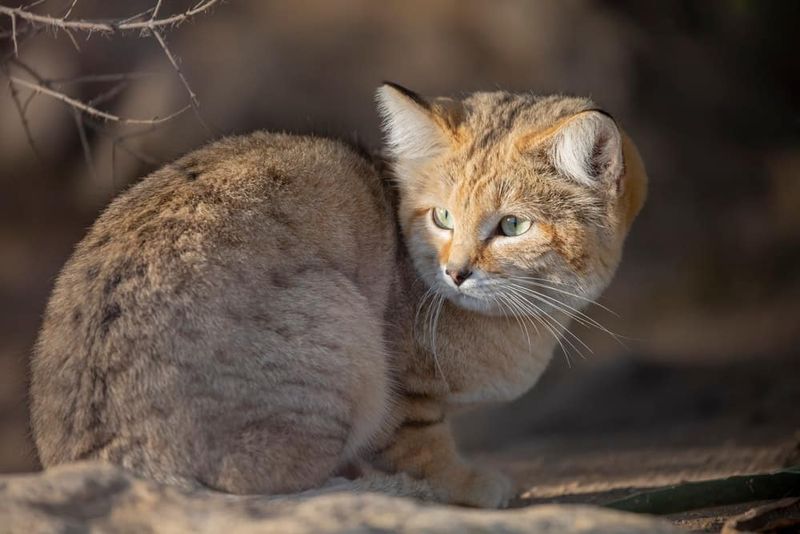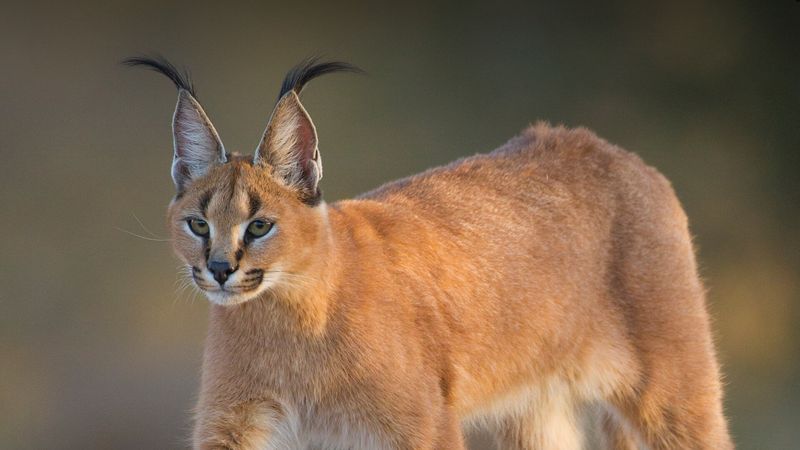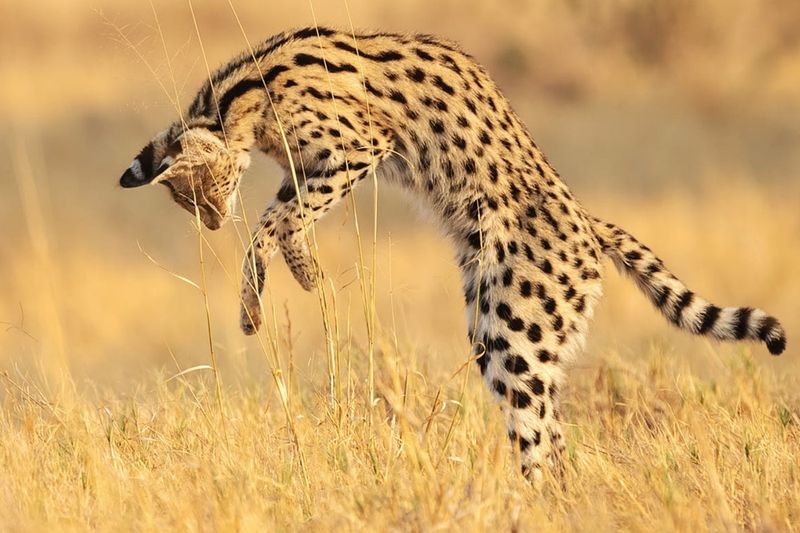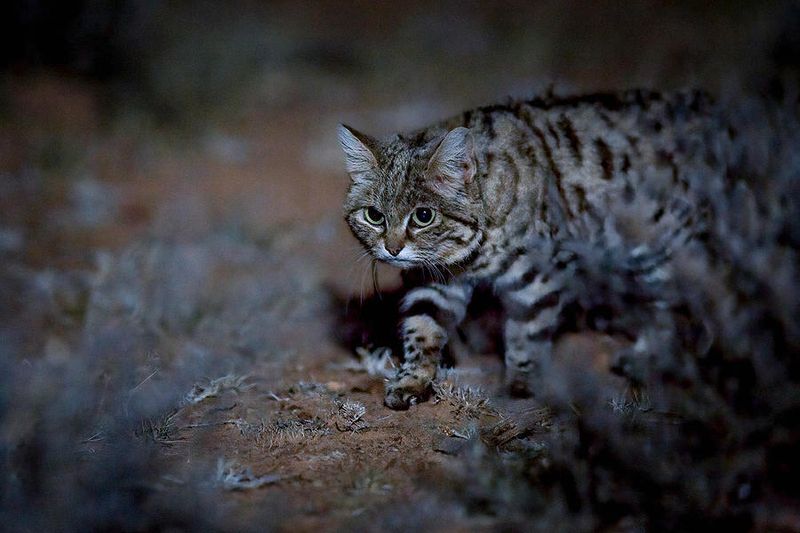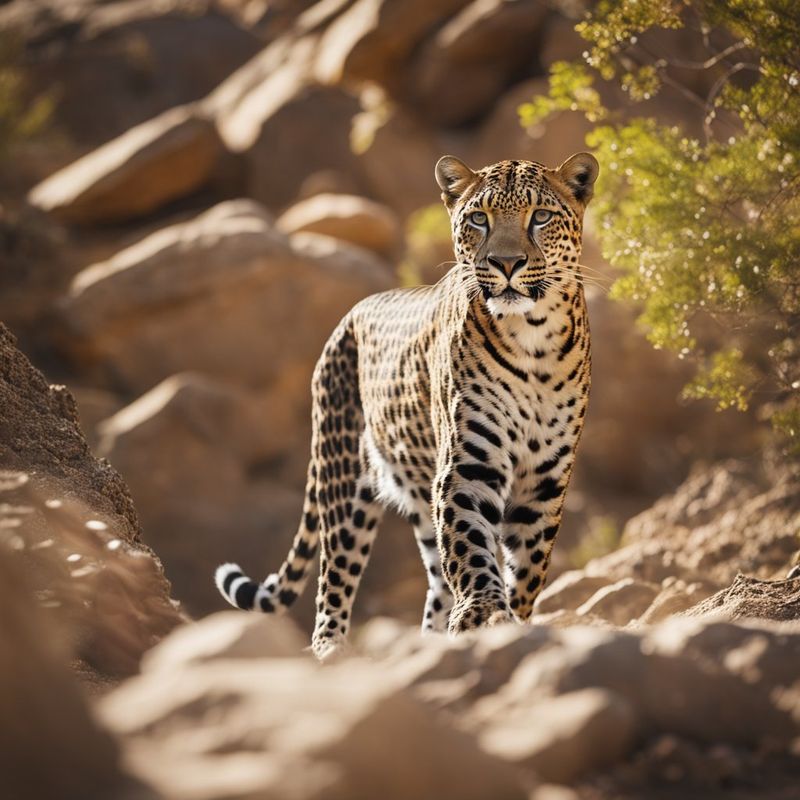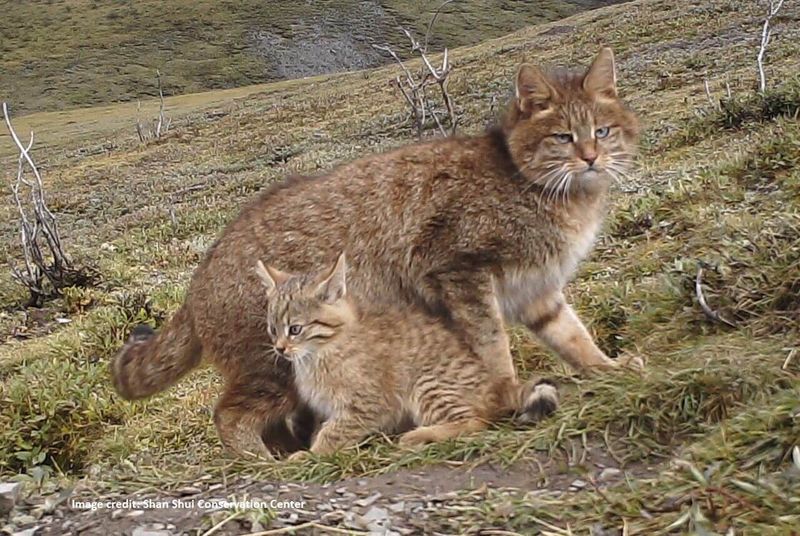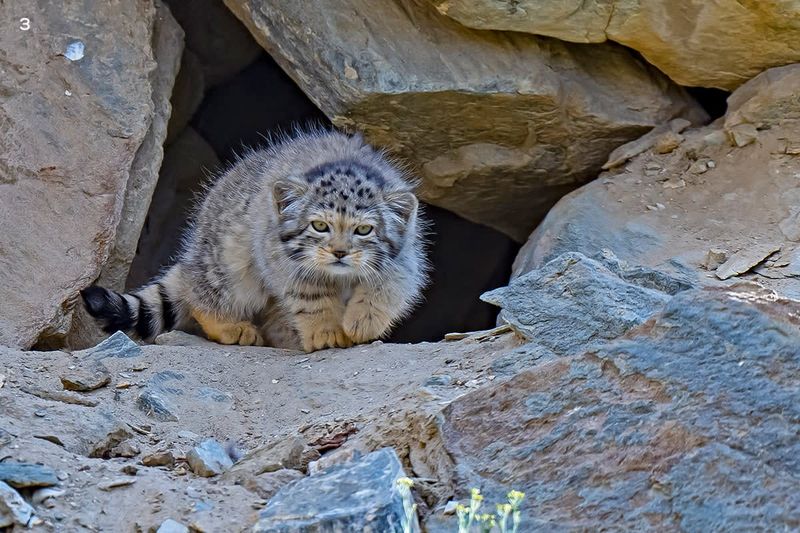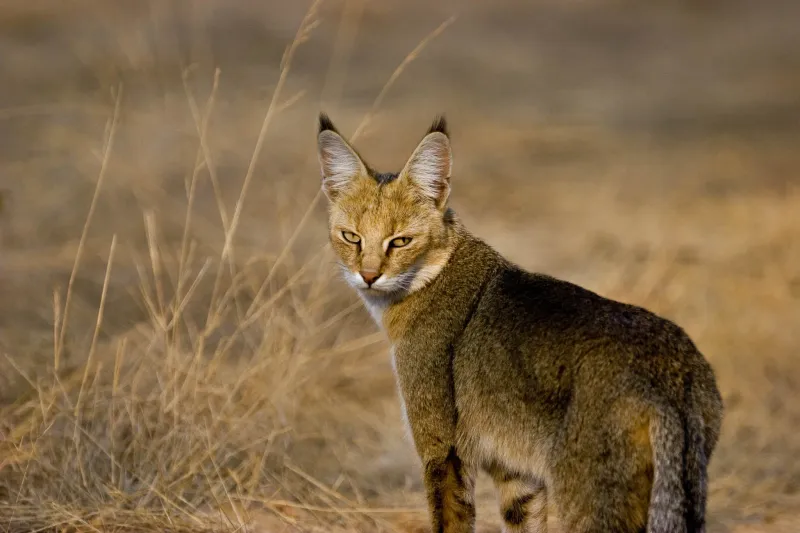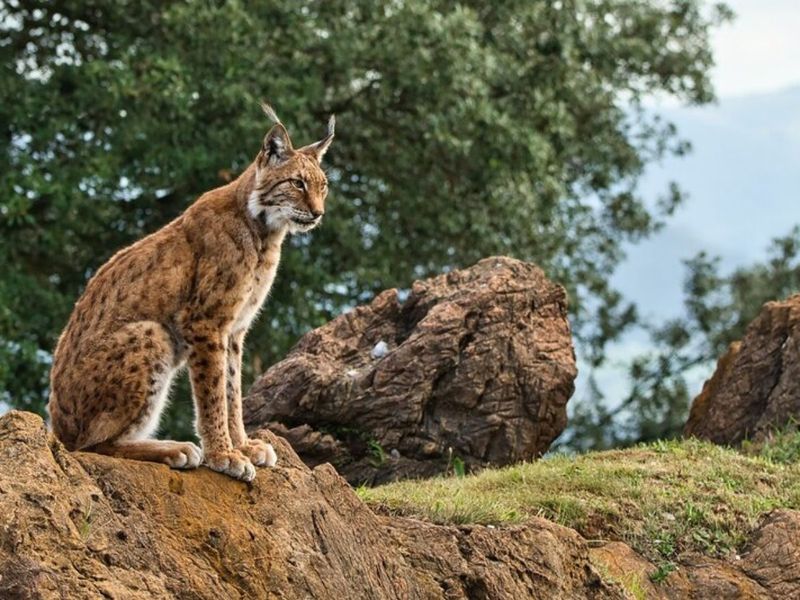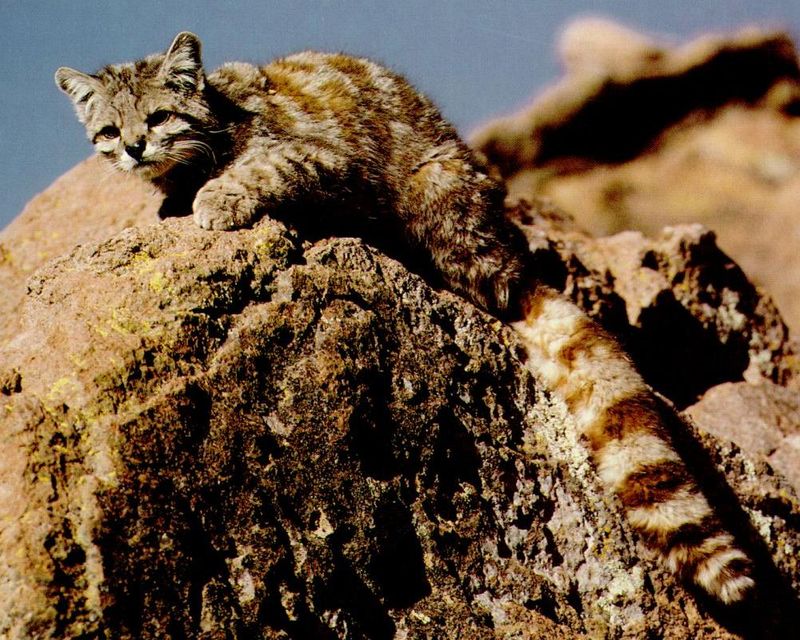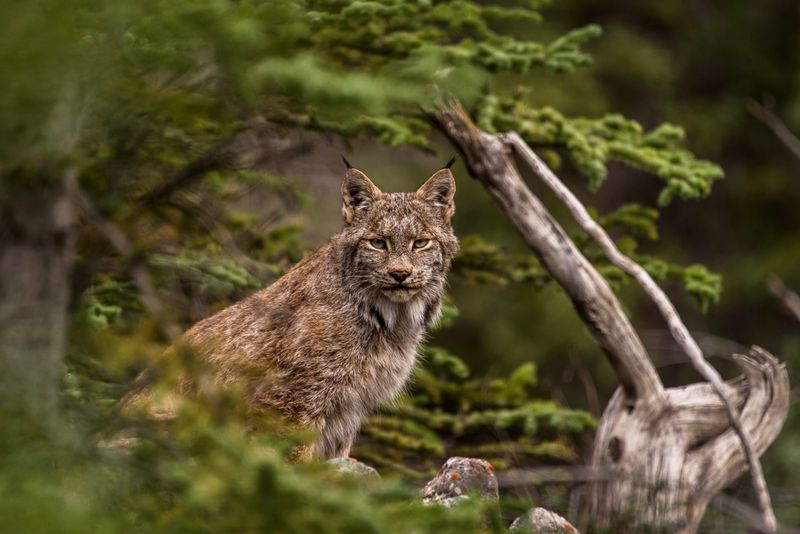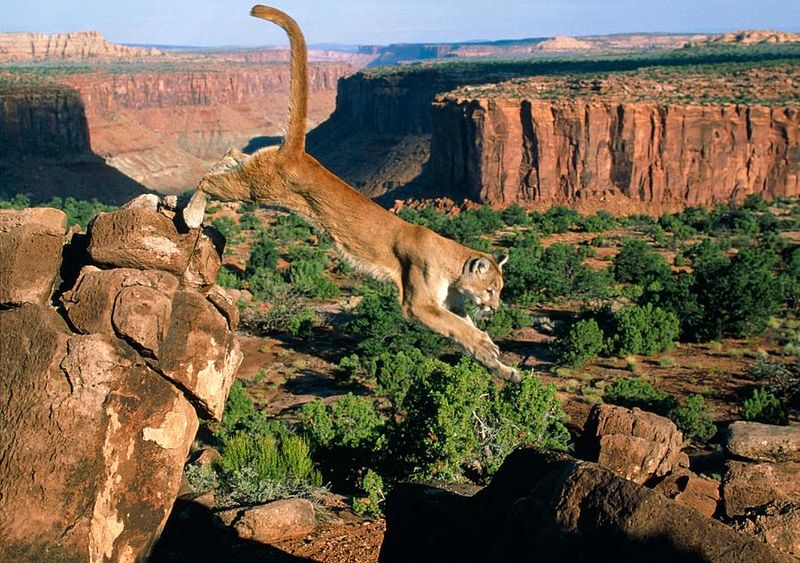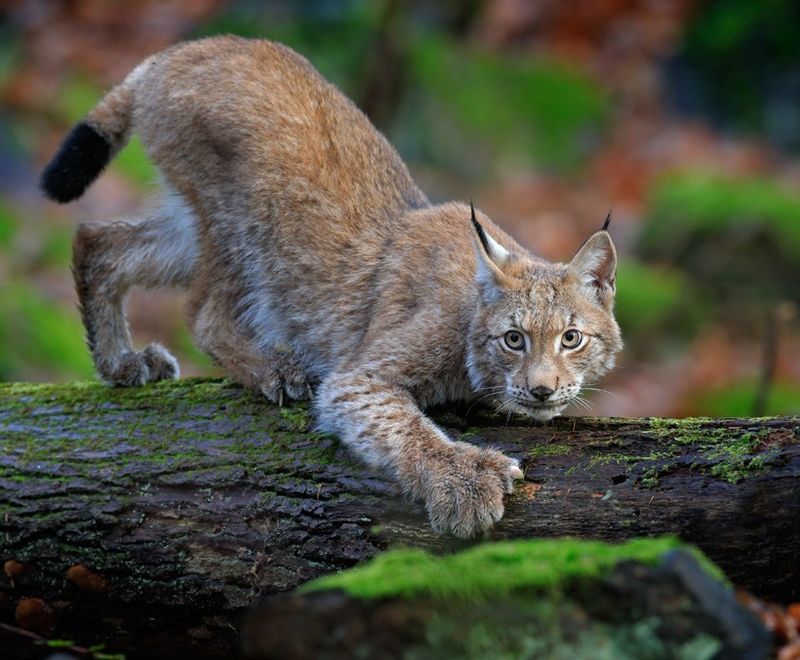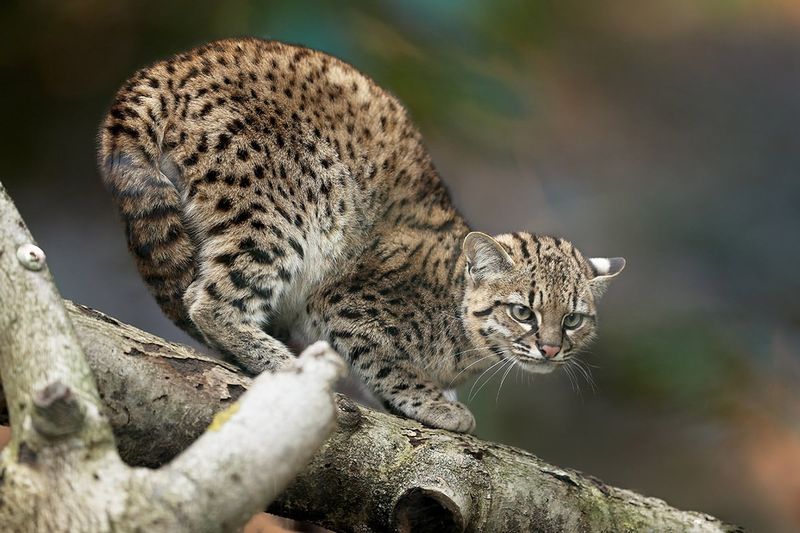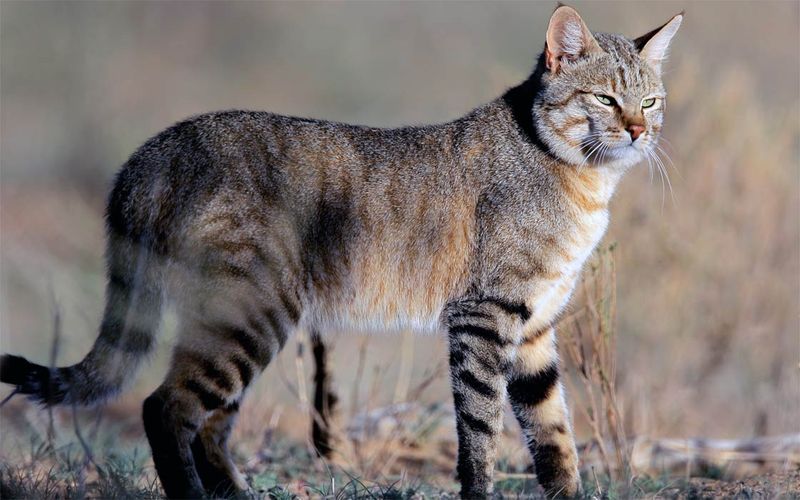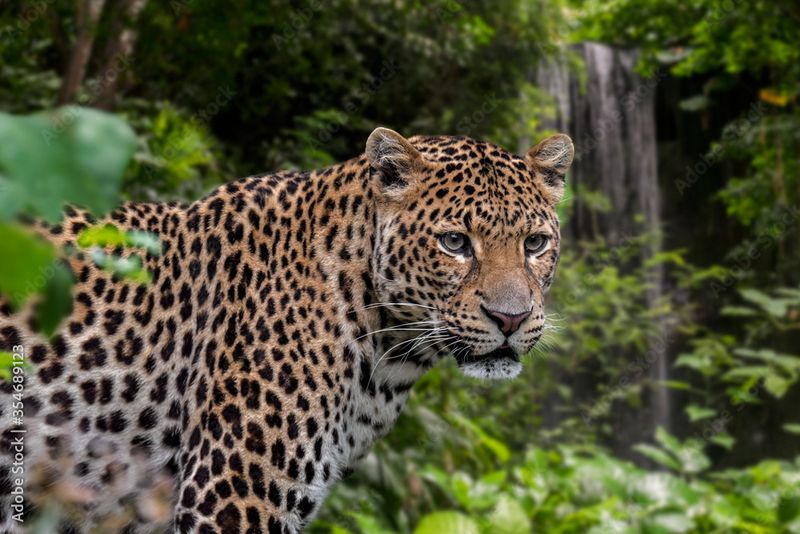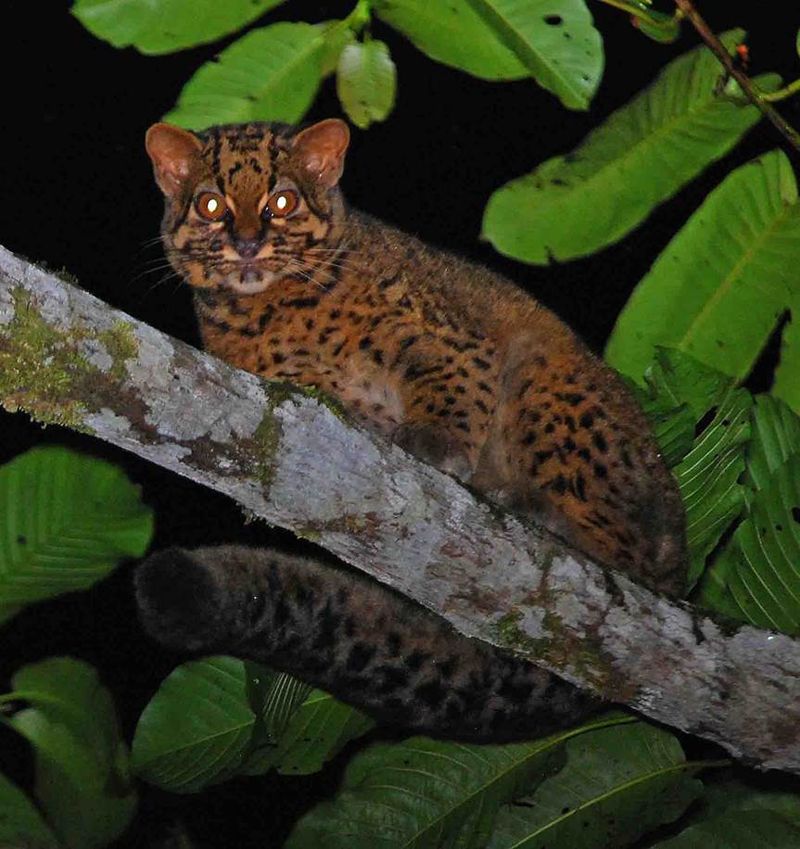📖 Table of Content:
In the harsh, sun-scorched landscapes of the world, only the most resilient creatures thrive. Among these, an exclusive group of feline species has evolved, perfectly adapting to life in arid environments. These cats, with their unique traits and survival skills, showcase nature’s incredible ability to mold life in response to the most challenging climates. With a combination of specialized behaviors, physiological adaptations, and striking appearances, these 17 rare feline species not only survive but flourish in some of the hottest regions on Earth. Explore the fascinating world of these extraordinary cats and their incredible adaptations.
1. Sand Cat
Native to the vast deserts of North Africa and Southwest Asia, the sand cat possesses unique adaptations for desert life. With its thick, sand-colored fur and furry foot soles, it blends seamlessly into its environment. The large ears not only enhance its hearing but also help dissipate heat. Sand cats are known for their elusive nature, living in burrows to escape the harsh sun. Interestingly, they can survive without water for extended periods, deriving necessary moisture from their prey. This feline embodies survival amidst the most unforgiving terrains.
2. Caracal
Recognizable by its striking tufted ears, the caracal is a master of stealth in Africa’s arid landscapes. This agile cat is known for its incredible jumping ability, capable of catching birds mid-flight. With a short, dense coat, it efficiently regulates body temperature in the searing heat. Caracals primarily hunt at night, using their acute hearing to locate prey. These solitary hunters are not only adept climbers but also possess a unique blend of power and grace, making them formidable predators in their sunlit domains.
3. Serval
With its long legs and distinctive spotted coat, the serval is perfectly designed for life in the African savannas. This cat’s oversized ears are not just for show; they provide exceptional hearing, crucial for detecting prey hidden in the grass. Servals are known for their remarkable jumping ability, often pouncing on prey with precision. While primarily nocturnal, they can occasionally be seen during the cooler parts of the day. Their elegant appearance and agile movements make the serval a true icon of its environment.
4. Black-footed Cat
Despite its small size, the black-footed cat is one of Africa’s most efficient hunters. Found in the arid regions of southern Africa, this tiny feline has a feisty reputation. Its solitary nature and nocturnal habits make it a mysterious presence in the wild. The black-footed cat’s large eyes and ears are perfectly adapted for nighttime hunting. Remarkably, it has the highest kill rate of any cat species, thanks to its relentless hunting prowess. This diminutive predator is a testament to survival through sheer tenacity.
5. Arabian Leopard
The elusive Arabian leopard inhabits the mountainous deserts of the Arabian Peninsula. Critically endangered, it is a rare sight among the rocky landscapes it calls home. These leopards are adept climbers, using their powerful limbs to navigate steep terrains. Their pale coat provides camouflage against the harsh desert backdrop. Arabian leopards are solitary animals, relying on their stealth and strength to hunt. These majestic creatures symbolize the fragile balance of survival in one of the world’s harshest environments.
6. Chinese Mountain Cat
Inhabiting the high-altitude deserts of the Tibetan Plateau, the Chinese mountain cat is a little-known feline with unique adaptations. Its dense fur and bushy tail provide insulation against the cold desert nights. These cats are skilled hunters, preying on small mammals and birds. The Chinese mountain cat’s elusive nature and remote habitat make it a rare sight, adding to its mystique. Despite the harsh conditions, it thrives in an environment where few creatures can endure, showcasing true resilience.
7. Pallas’s Cat
Pallas’s cat, with its dense, fluffy fur, is a master of disguise in the rocky steppes of Central Asia. Its stocky build and low-set ears are adaptations for the cold, dry climate. This solitary feline is primarily active at dawn and dusk, relying on its keen senses to hunt small rodents and birds. Pallas’s cat’s unique facial structure, with its flat face and wide-set eyes, gives it a perpetual expression of surprise. This remarkable cat is a symbol of endurance in its challenging habitat.
8. Jungle Cat
Despite its name, the jungle cat thrives in the arid regions of South Asia and the Middle East. It is well-adapted to various environments, from wetlands to grasslands. This versatile hunter has a tawny coat that blends with the dry foliage, aiding its stealthy approach. Jungle cats are excellent swimmers, a rare trait among felines, allowing them to exploit diverse habitats. Their ability to adapt to changing environments highlights their resilience and resourcefulness, making them a fascinating species to observe.
9. Iberian Lynx
The critically endangered Iberian lynx is native to the Mediterranean woodlands and scrublands of Spain and Portugal. This beautiful cat is distinguished by its tufted ears and short tail. The Iberian lynx’s primary diet consists of rabbits, and its survival is closely linked to the availability of this prey. Conservation efforts are crucial for its survival, as habitat loss poses a significant threat. With its striking appearance and specialized hunting skills, the Iberian lynx is a testament to the delicate balance of ecosystems.
10. Andean Mountain Cat
The Andean mountain cat is a rare and elusive feline residing in the high-altitude regions of the Andes. With its thick fur and bushy tail, it is well-equipped for the cold, arid climate. These cats are expert climbers, navigating the rugged terrain with ease. The Andean mountain cat’s diet primarily consists of small mammals, particularly mountain vizcachas. Its unique adaptations and secluded habitat make it one of the least known and most endangered cat species in the world, embodying the spirit of survival against all odds.
11. Canadian Lynx
Though typically associated with colder environments, the Canadian lynx also thrives in the arid regions of North America’s boreal forests. Its thick fur and large, padded paws allow it to navigate snow with ease, but it is equally adept in less snowy conditions. The lynx primarily preys on snowshoe hares, with its population closely tied to the hare’s abundance. Its stealthy hunting style and solitary nature make it a mesmerizing presence in the wild. A symbol of adaptability, the Canadian lynx thrives across diverse landscapes.
12. Cougar
The cougar, also known as the mountain lion, is a versatile predator found in a range of habitats across the Americas, including arid regions. Its tawny coat provides excellent camouflage, allowing it to stalk prey silently. Cougars are solitary by nature, with a powerful build that enables them to take down large prey. They are skilled climbers and swimmers, which aids in their survival across varied terrains. Revered by many cultures, the cougar epitomizes strength and adaptability in the animal kingdom.
13. Eurasian Lynx
The Eurasian lynx, Europe’s largest feline, is a master of stealth in the forested and arid regions. Its tufted ears and spotted coat offer perfect camouflage in the dappled sunlight. Eurasian lynxes are solitary hunters, relying on their keen eyesight and hearing to ambush prey. These cats are not only agile climbers but also powerful swimmers, showcasing their adaptability. Their presence is vital for maintaining ecological balance, as they help control prey populations. A majestic predator, the Eurasian lynx embodies the wild’s untamed spirit.
14. Geoffroy’s Cat
Geoffroy’s cat, a small wild feline native to South America, thrives in diverse environments, including arid regions. Its spotted coat provides excellent camouflage among the grasses and shrubs. These cats are primarily nocturnal, hunting small mammals and birds with precision. Geoffroy’s cat is known for its arboreal skills, often seen climbing trees in pursuit of prey or safety. Despite its small size, it is a formidable hunter. This cat’s adaptability across varied landscapes highlights the incredible diversity of the feline world.
15. African Wildcat
The African wildcat, ancestor of the domestic cat, is well-suited to arid environments. Its striped coat aids in camouflage, while its keen senses make it an adept hunter. Found across Africa and parts of Asia, this cat has a wide distribution. African wildcats are solitary and territorial, often seen hunting at dusk and dawn. They have a varied diet, including rodents and birds. Their adaptability and resilience have allowed them to thrive alongside human settlements, bridging wild and urban landscapes. A true survivor, the African wildcat is a link to the past.
16. Javan Leopard
The Javan leopard is a critically endangered species found only on the Indonesian island of Java. Adapted to both forested and more arid regions, its survival is threatened by habitat loss and poaching. Javan leopards have a sleek, spotted coat that provides camouflage in their diverse habitats. These solitary cats are powerful hunters, preying on deer and other mammals. Conservation efforts are underway to protect this unique species, highlighting the urgent need for habitat preservation. The Javan leopard is a symbol of the island’s rich biodiversity.
17. Marbled Cat
The marbled cat, though primarily associated with rainforests, can also be found in more arid regions. It possesses a beautifully patterned coat that provides excellent camouflage. This elusive feline is an expert climber, often hunting birds and small mammals among the trees. The marbled cat’s arboreal lifestyle and nocturnal habits make it a rare sight in the wild. Despite its elusive nature, it plays a crucial role in the ecosystem, controlling small animal populations. The marbled cat’s unique adaptations are a testament to nature’s ingenuity.
